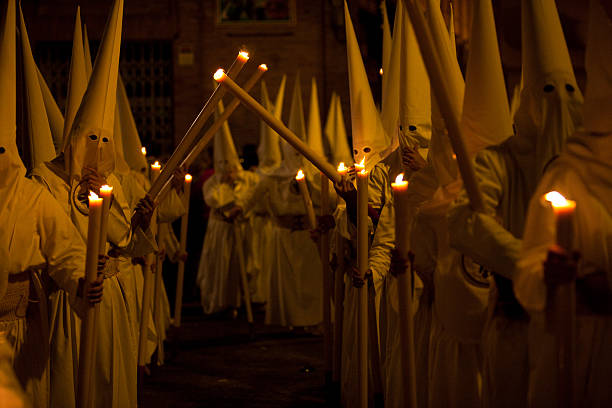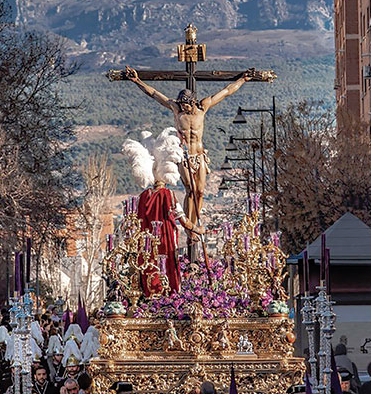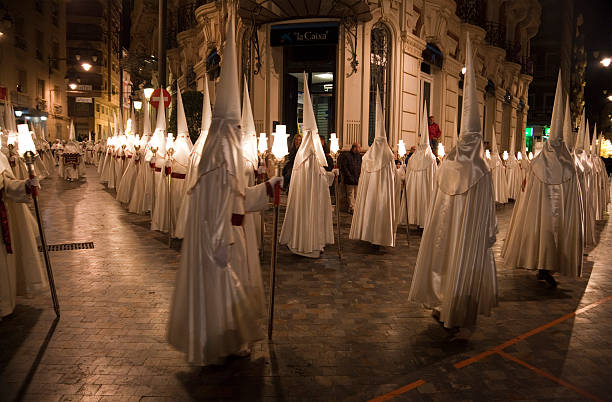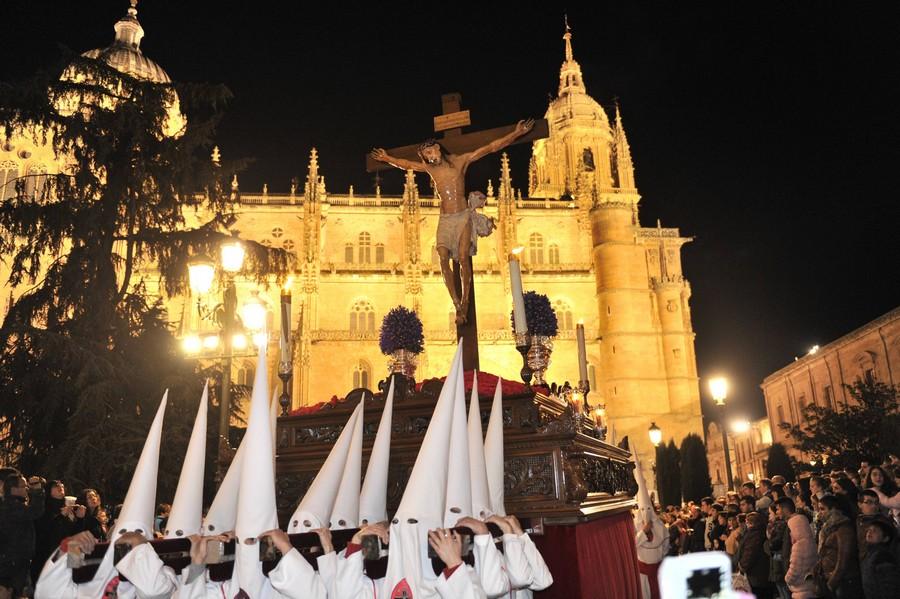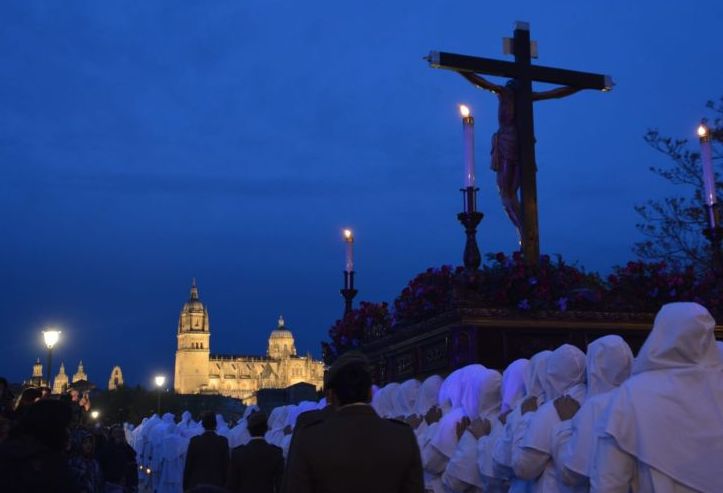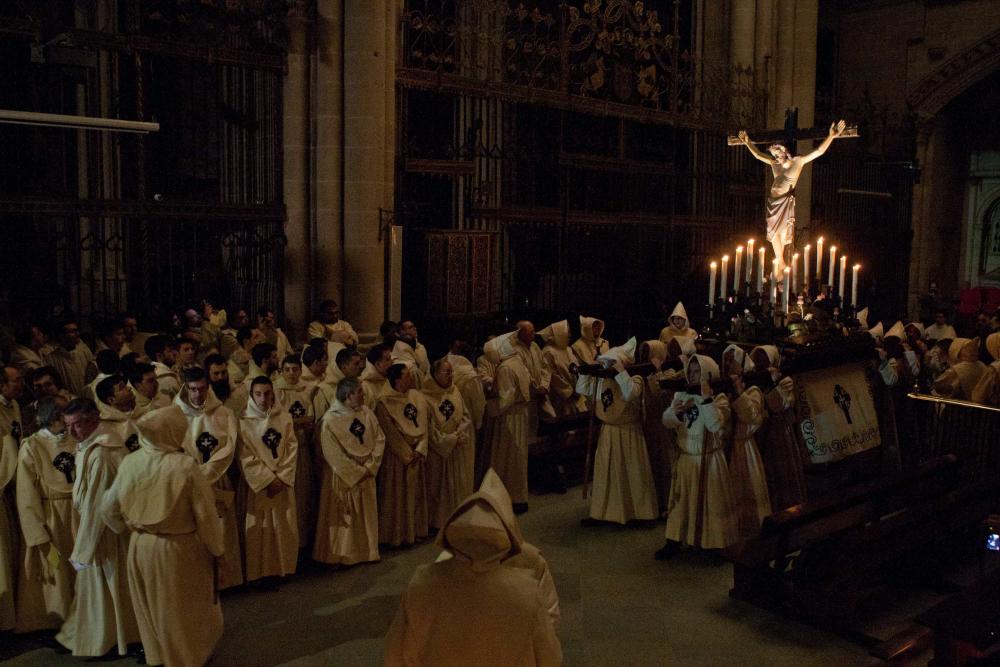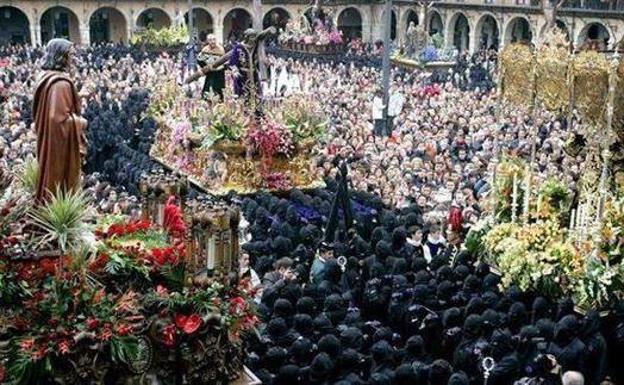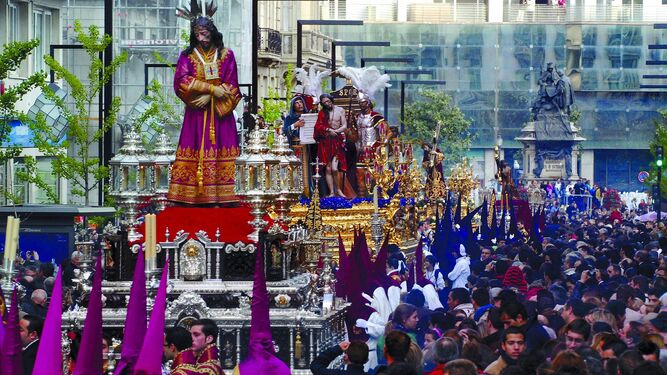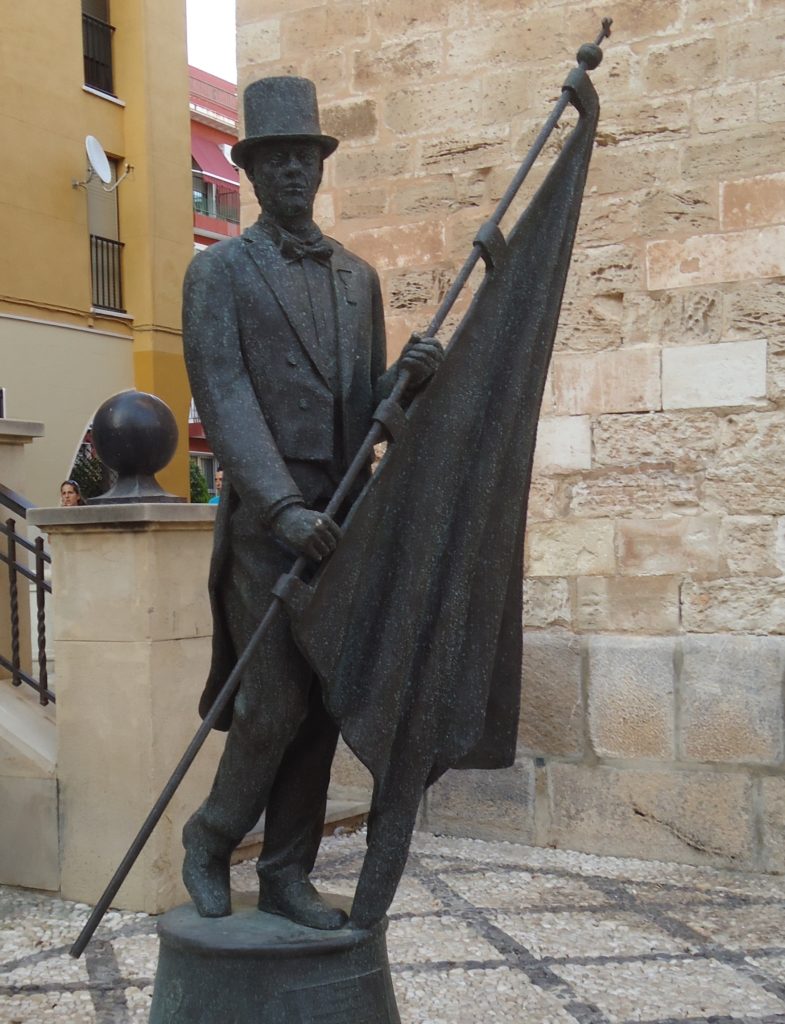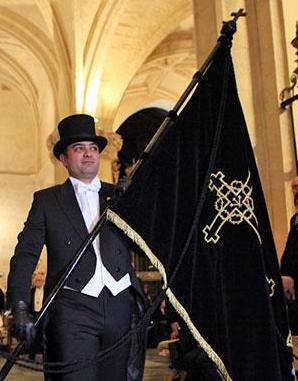FHB Highlight: «Easter in Spain»
ELENA DÍAZ-GÁLVEZ PÉREZ DEL PUERTO
April 2022
Easter in Spain is much more than a religious tradition for Catholics. The associations of the faithful, or what is the same, the Brotherhoods, prepare every year to procession through the different towns and provinces of Spain. It is throughout the fourteenth and fifteenth centuries when the first brotherhoods arise, such as those of Vera Cruz, which were mostly penitential, but there are even some that date back to the XI century.
At the beginning of the fifteenth century, St. Vincent Ferrer toured Spain founding many and, in order for the sins to be forgiven, they used to be disciplinarians and flagellants. Today there are processions that are the reflection of these traditions such as penitents carrying wooden crosses, penitents making the journey barefoot or staging with crowns of thorns and flogging. The splendor of them occurs in the sixteenth century. They arise to remember the passion and death of Christ.
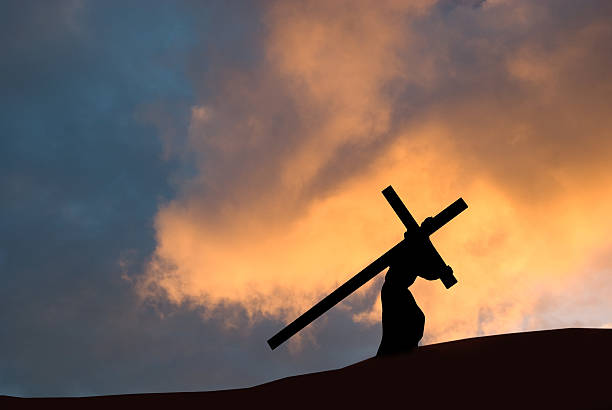
The Holy Weeks of Seville, Malaga, Cuenca and Valladolid were the first 4 declared of National Tourist Interest in 1980. Now, there are 25 that can boast of that recognition. Let´s see some of them:
Málaga
The Brotherhood of blood (1507) leaves on Holy Wednesday.
Its oldest image is the Christ of Veracruz and Blood (1505) that was destroyed in 1931 but has managed to be restored and comes out on Holy Thursday.
Also noteworthy are The Captive (Monday afternoon), The Virgin of the Dove, with live pigeons (Wednesday) and the impressive Christ of the Good Death or Christ of Mena carried on shoulders by “La Legion” (Thursday).
Sevilla
It is in Seville where the most internationally known “pasos” come out. If I had to highlight something in particular, it would be the Virgins under pallium, with beautiful images and embroidered mantles. The most famous are La Virgen de la Macarena and Nuestra Señora de la Esperanza.
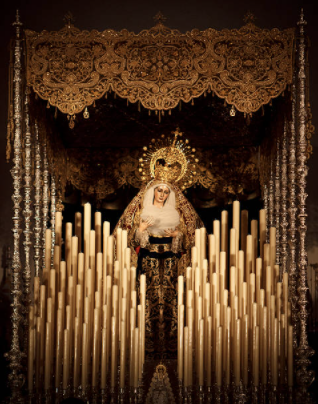

Virgen de la Macarena 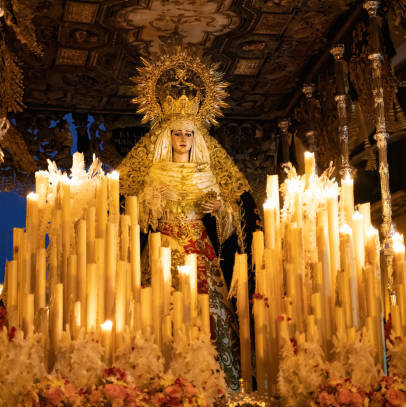
The Christ of Great Power, from 1620, is the most difficult to carry due to the route it has to follow. The oldest Christ that processions in the Seville Holy Week is El Cristo de la Vera Cruz (around 1540).
Other “pasos” that deserve mention for their popularity and antiquity are El Silencio, El Baratillo, El Cristo del Amor and El Cristo de los Estudiantes.
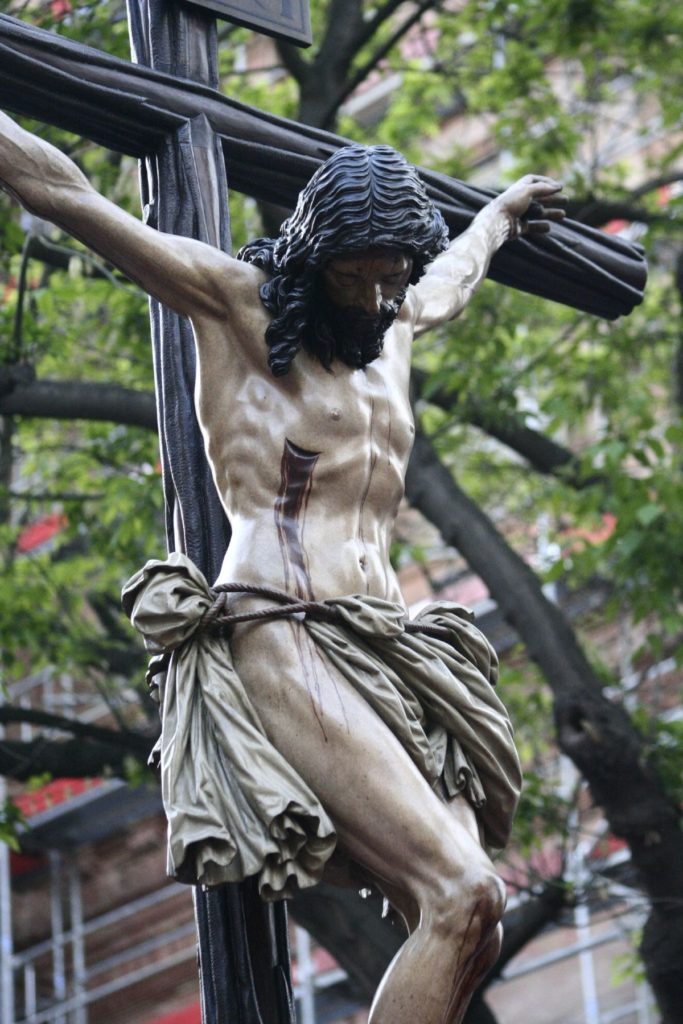
El Cristo de los Estudiantes 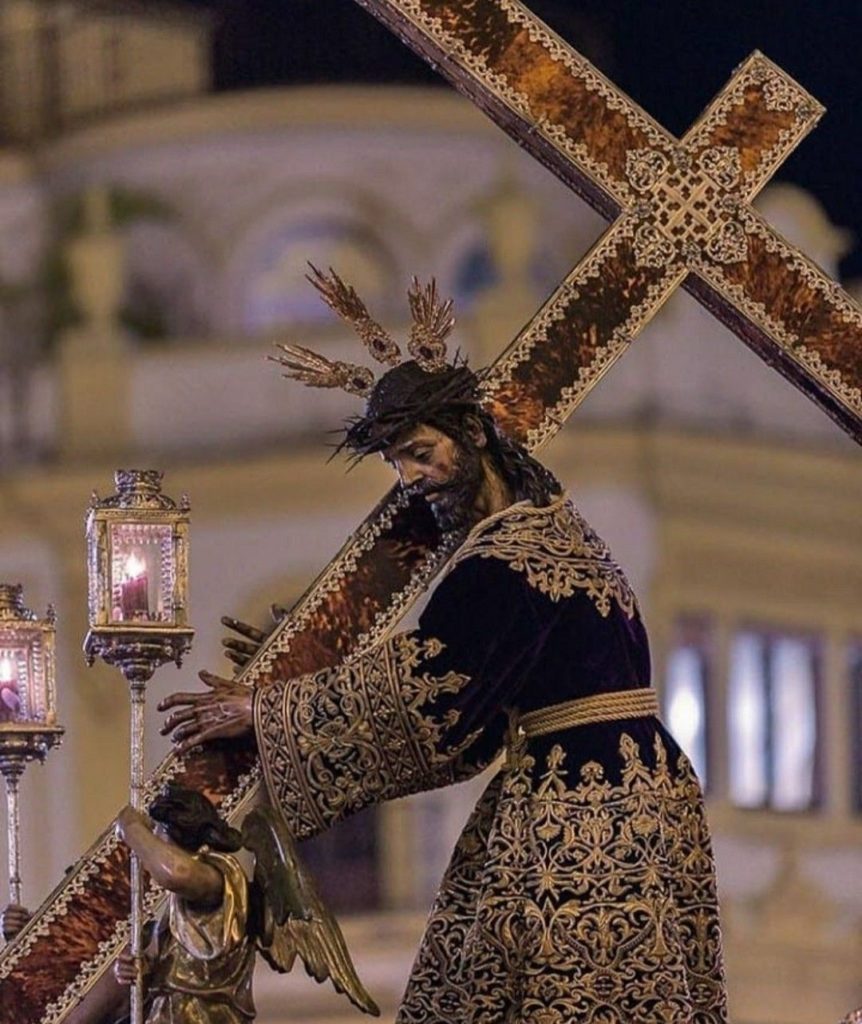
La Hermandad del Silencio
Cuenca
The procession of the Camino del Calvario or the Turbas, is the most popular and crowded. This year is its 400 anniversary. The image comes out at five in the morning on Good Friday.
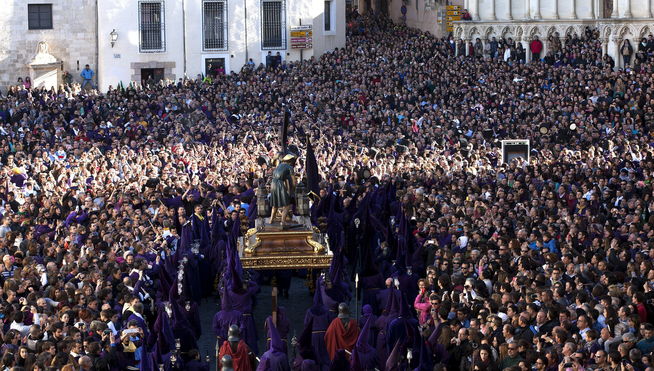
Valladolid
Holy Week in Valladolid is one of the best in Spain. They emphasize the sobriety of its processions and the beauty and quality of its “pasos”, works of the best imagers of all time.
Medina de Rioseco, Valladolid
Brotherhood of Jesus Tied to the Column of the S. XVI. His poignant look stands out. It is his only image and comes out on Holy Thursday.
Medina del Campo, Valladolid
From this city are the oldest discipline processions in Spain (1411), created by San Vicente Ferrer. Our Lady of Sorrows leaves every Good Friday since the mid-sixteenth century. The pain represented in this image by Juan de Juni is of great realism.


Nuestra Señora de las Angustias, talla de Juan de Juni
Salamanca
The oldest of the images is that of the Christ of the Battles or Cristo del Cid, who they say accompanied the “Campeador” in his battles. It is worth seeing the passage across the roman bridge of the Christ of Love and Peace.

Zamora
Of the brotherhoods that were founded in the fifteenth century, only three have survived today; The True Cross (the oldest comes out on Holy Thursday), Our Mother of Sorrows and The Most Holy Resurrection. The oldest image is The Christ of the Holy Spirit, from the sixteenth century that leaves on Good Friday.
El Cristo de las Injurias se encuentra en la catedral de Zamora, es una obra del siglo XVI y posiblemente la mejor obra escultórica de la Semana Santa de Zamora. Se desconoce su autor. La Real Hermandad del Santísimo Cristo de las Injurias, es popularmente conocida como Cofradía del Silencio, por el acto del juramento que tiene lugar en el atrio de la catedral. Procesionan el Miércoles Santo y es uno de los momentos cumbres de la Semana Santa de Zamora.
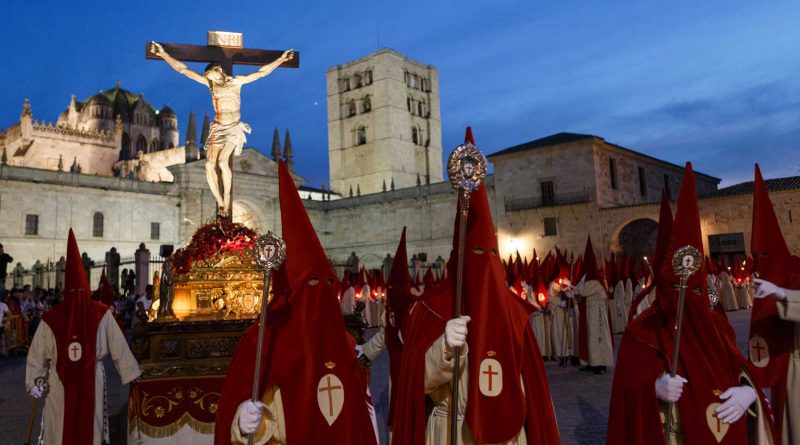

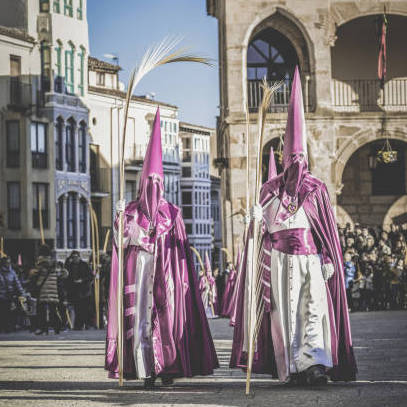
Procesión Domingo de Ramos en Zamora 
Monumento al Merlú(*).
Fachada de la Iglesia San Juan Bautista, Zamora
(*)Merlú: couples of congregants of the Brotherhood of Jesús Nazareno whose task is to gather the other brothers to begin the processional parade.
Ávila
Around the wall thousands of faithful leave with The Holy Christ of the Executed from the early sixteenth century on the night of Holy Thursday.
In Mosen Rubi´s chapel the image of The Holy Christ of the Battles of the Catholic Kings, S. XV, is preserved. It also comes out on Thursday.
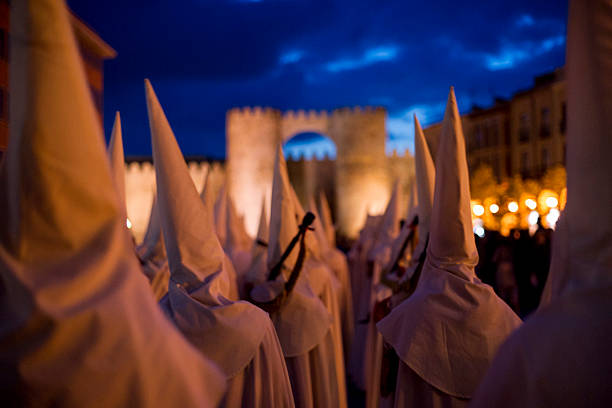
León
The oldest image is Our Lady of the Way and the Market (La Dolorosa) from the late fifteenth century. It is not in any brotherhood but it processions on Good Friday as a prologue to Holy Week.
Three historic brotherhoods are in charge of the big day, Good Friday: Sweet name of Jesus Nazarene from 1611, Las Angustias and Soledad founded in 1512 and Minerva and Vera Cruz that procession the Holy Burial. Works by Juan de Juni and Gregorio Fernández come out.
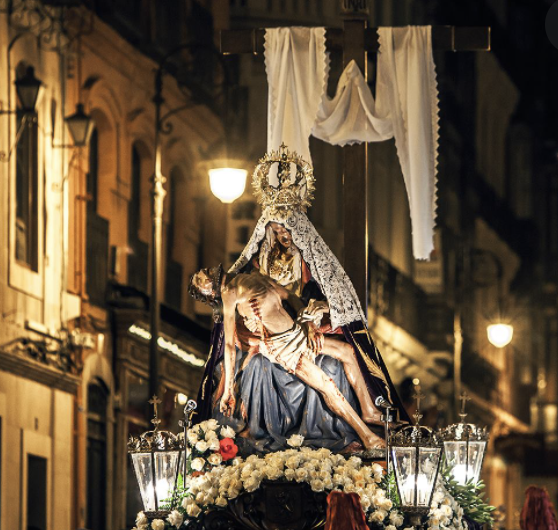
Granada
Mention should be made of the famous Christ of the Gypsies. Bonfires are lit in the “Sacromonte” as it passes singing “saetas”. Its route through the narrow streets with the Alhambra illuminated in the background is spectacular.
Toledo
The Royal Brotherhood of Holy Charity is founded in 1085 by Alfonso VI and the Cid Campeador, during the siege of the city of Toledo, makes it to be considered the oldest in Spain. In this procession The Christ of Mercy and Solitude of the Poor (late thirteenth century and beginning of the fourteenth century) takes the streets on Holy Tuesday.

Anónimo, s.XIV Antigua,Ilustre y Real Cofradía de la Santa Caridad
Cristo de la Humildad, Toledo
Orihuela (Alicante)
Famous for the artistic richness of its “pasos”, many of Salzillo. On Tuesday the Brotherhood of Forgiveness leaves and on Saturday The Covered Knight who has the privilege of not being discovered when the “pasos” go across the cathedral.

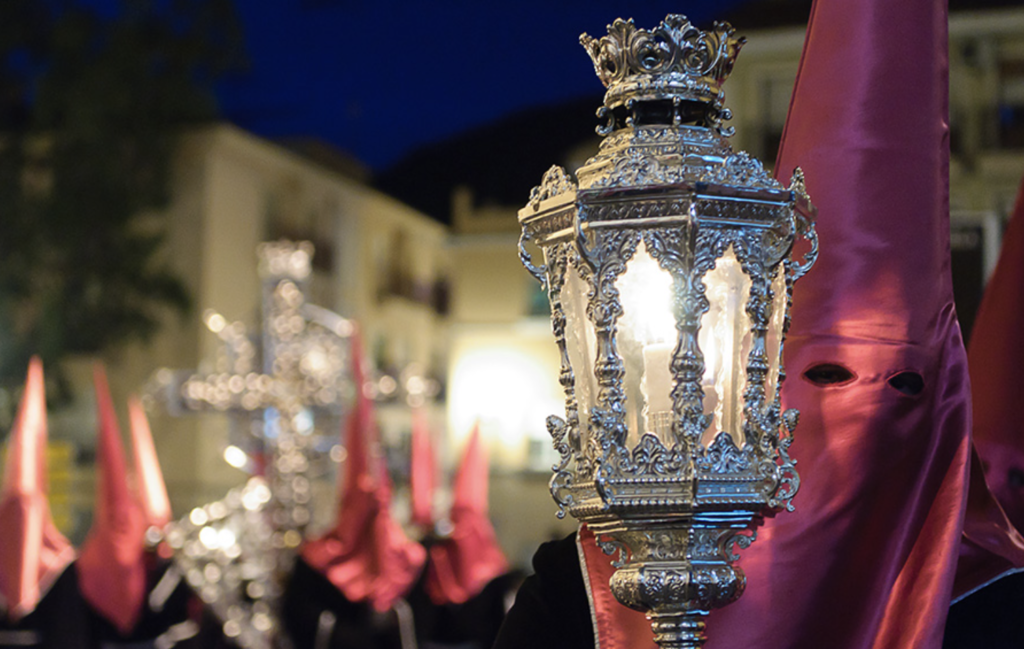
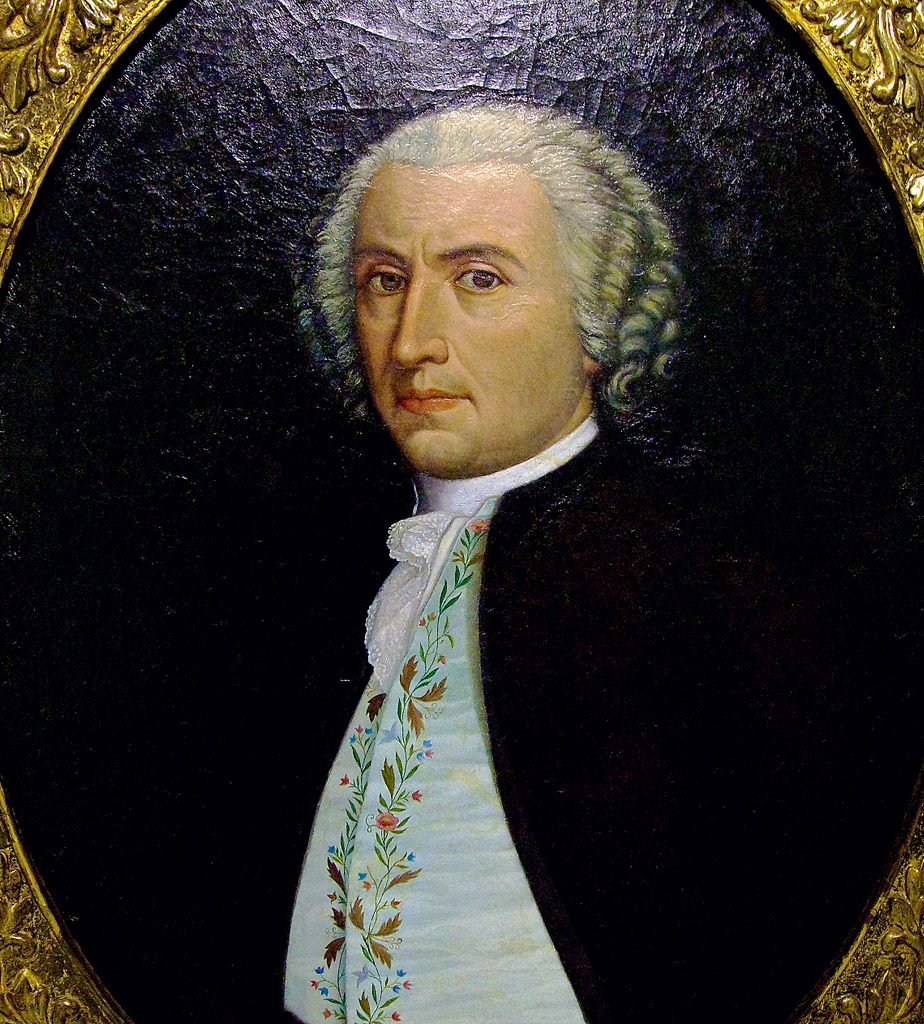
Francisco Salzillo,
considered the most representative
Spanish 18th century imagery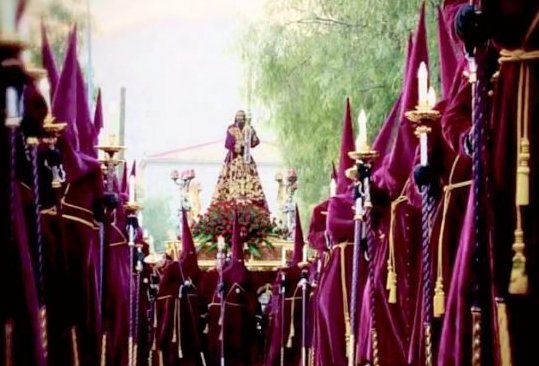
After two years overshadowed by COVID restrictions, Holy Week 2022 is expected with great emotion and feeling. I hope that we can all enjoy it and live it as we have been doing all these centuries.


